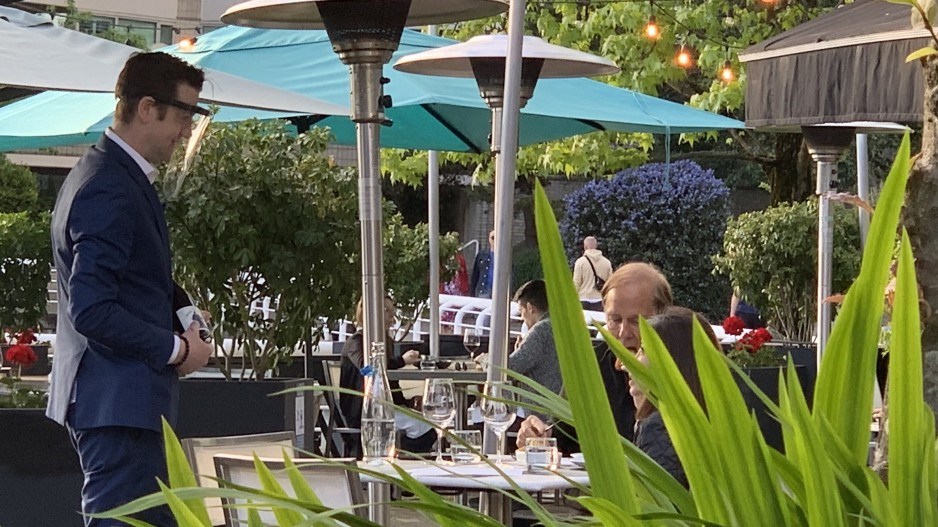Restaurants have more clarity about the rules they have to follow when providing dine-in service during the COVID-19 pandemic thanks to a modified order from B.C.'s provincial health officer, Bonnie Henry.
Municipalities have started in the past several weeks to be quicker in approving patios on public property, while the province has been quicker to approve alcohol licences for those patios.
The City of Vancouver, for example, on June 11 passed three new initiatives designed to help businesses safely increase service levels. One was to expand the capacity of liquor-primary establishments while another was to extend the temporary-patio-permit program onto private property. The third motion was to waive permit fees for temporary patios.
Moves like these across the province are why Henry said in a June 10 order that restaurants can operate with as many people as they can hold as long as they can either keep people in different parties two meters apart, or have impermeable shields between tables.
Restaurant owners previously understood that they had to operate at a maximum of 50% capacity.
"Instead of a blanket 50%, what we now are requiring is that every restaurant, pub or bar has to identify a number for their capacity that includes the patios," she said. "This was one of the complicating things. As you're expanding your patio, how do we know what number to use?"
The new rule is that restaurant owners must calculate a number for the most people who they can safely accommodate and put that number into their safety plans.
They also must monitor places where patrons congregate, or stand in line, and remind those customers to maintain a distance of two metres from one another, unless they are in the same party, according to the new order.
Restaurants are also now specifically able to have what the government calls "self-service stations," which could be read to mean buffets, as long as the restaurant owners provide hand-washing facilities, or alcohol-based sanitizers within easy reach of the station. They must also remind customers to wash or sanitize their hands before touching self-service food, or other items, and to maintain a two metre distance from one another. The restaurant owner must also ensure that staff frequently clean and sanitize high-touch surfaces at the station, and utensils that are used.
If an event is held at the restaurant, it will still be limited to 50 people even if that number is less than the total number that the restaurant has in its safety plan.
Diners at events will still be limited to groups with a maximum of six people.
Henry said that the province would update its orders as its environmental health officers, inspectors and WorkSafeBC staff get more experience.
"We're happy with the move," said Charles Gauthier, CEO, Downtown Vancouver Business Improvement Association.
"It's good that the province and Dr. Henry are willing to always review the orders and make adjustments accordingly."
He remains concerned that a lot of businesses in the downtown area will not be able to survive. What is needed, he said, is more foot traffic downtown.
Henry has encouraged people to go to restaurants but Gauthier said he would also like her to say, "We haven't had any community transmissions as a result of a restaurant not following the rules."
BC Restaurant and Food Services Association CEO Ian Tostenson posted to his LinkedIn account that "this positive change is in direct response to the advocacy work" of his association, the Business Technical Advisory Panel, the BC Alliance of Beverage Licensees (ABLE BC) and the BC Craft Brewers Guild.




